Research
Research topics
- Long-term electrophysiological recording of large populations of cultured cells using microfabrication techniques
- Stem cell transplantation
- Mechanisms of vagus nerve stimulation in epilepsy
- Mechanisms of autonomic nervous system innervation of cardiac cells and application to regenerative medicine
- Effects of magnetic stimulation on the nervous system
- Biology-driven mathematics
- Multiscale mathematical model of the brain
- Non-invasive measurement of the human brain
- Evaluation of cardiovascular regulation and its application in health care systems
- Enhanced brain-computer interface by multimodal augmented reality techniques
- Biofeedback systems for human support
Long-term electrophysiological recording of large populations of cultured cells using microfabrication techniques
Biological systems are characterized by their robustness and highly parallelized computation. Using microelectrode arrays (MEA)*, we investigate the mechanism of information processing and pathology in neural and cardiac systems and seek potential medical applications.
* MEA recording system: An electrophysiological recording method using microfabricated culture dishes. The electrical activity of cells cultured in the dish is recorded via a built-in microelectrode array placed under the dish. The system allows both long-term monitoring of multisite electrical activity and electrical stimulation of multiple cells.
Stem cell transplantation
Stem cell transplantation is a promising therapeutic strategy for treating neurodegenerative disorders such as Parkinson’s disease, Alzheimer’s disease, and ischemia. Using microfabrication, we develop in vitro models consisting of grafted neurons, hosted by primary neural networks, to conduct long-term investigations into the functional connectivity between different neuronal groups.
1) Shimba K., Sakai K., Takayama Y., Kotani K., Jimbo Y., Recording axonal conduction to evaluation the integration of pluripotent cell-derived neurons into a neuronal network, Biomedical Microdevices, Vol. 17, Article 94, 2015
2) Takayama Y., Moriguchi H., Kotani K., Suzuki T., Mabuchi K., Jimbo Y., Network-wide integration of stem cell-derived neurons and mouse cortical neurons using microfabricated co-culture devices, Biosystems, Vol. 107, pp. 1-8, 2012
Mechanisms of vagus nerve stimulation in epilepsy
Epilepsy is a serious neurological disease, characterized by repetitive seizures due to hyperexcitation of cortical neurons. Epileptic seizures are known to cause serious symptoms, involving convulsion and unconsciousness. Many anti-epileptic drugs are ineffective for seizures in 30% of patients. This is termed “refractory epilepsy”. Recent clinical studies have shown that vagus nerve stimulation (VNS) is effective in refractory epilepsy. However, since the cellular mechanisms of VNS remain largely unclear, no one can predict or control the effective parameters of VNS for epilepsy treatment. To reveal the cellular and network mechanisms and the optimal stimulation parameters of VNS, we have developed an in vitro model in a microchamber placed on an MEA substrate, involving several regions of the brain crucial to VNS.
Mechanisms of autonomic nervous system innervation of cardiac cells and application to regenerative medicine
Heart rhythm is regulated by both the electrical conduction system in the heart and the autonomic nervous system (ANS). To investigate the cellular mechanisms of the ANS regulating heartbeat, we have developed a co-culture of sympathetic neurons (a component of ANS) and cardiomyocytes in a microchamber placed on an MEA. Using the co-culture system, we monitor morphologies and electrical activities to study how the sympathetic nervous system modulates heartbeat. We apply the system to study the ANS innervation of cardiac-differentiated stem cells. Our goals are to understand the mechanism of arrhythmia (irregular heartbeat) caused by abnormal ANS activities and to develop a technique for the potential application to stem cell transplantation.
1) Takeuchi A., Shimba K., Mori M., Takayama Y., Moriguchi H., Kotani K., Lee J., Noshiro M., Jimbo Y., Sympathetic neurons modulate the beat rate of pluripotent cell-derived cardiomyocytes in vitro, Integrative Biology, Vol. 4, pp. 1532-1539, 2012
2) Takeuchi A., Nakafutami S., Tani H., Mori M., Takayama Y., Moriguchi H., Kotani K., Miwa K., Lee J., Noshiro M., Jimbo Y., Device for co-culture of sympathetic neurons and cardiomyocytes using micro- fabrication, Lab on a Chip, Vol. 11, pp. 2268-2275, 2011
Effects of magnetic stimulation on the nervous system
For a long time, magnetic stimulation to the central nervous system has been used for various medical investigations. Recently, repetitive transcranial magnetic stimulation (rTMS) has been a popular method for treating diseases affecting the nervous systems, and it has a potential application to serious neurological disorders. However, because it remains unclear how magnetic stimulation changes neural network activities, the clinical effects of magnetic stimulation are uncertain. We investigate the effects of magnetic stimulation on cultured neuronal networks.
1) Saito A., Takayama Y., Moriguchi H., Kotani K., Jimbo Y., Induced current-pharmacological split stimulation system for neuronal networks, IEEE Transactions on Biomedical Engineering, Vol. 61, pp. 463-472, 2014
2) Saito A., Takayama Y., Moriguchi H., Kotani K., Jimbo Y., Effects of Extremely Low Frequency Magnetic Fields on Neuronal Development of P19 Embryonal Carcinoma Cells, IEEJ Transactions on Electrical and Electronic Engineering, Vol. 6, pp. 157-162, 2011
Biology-driven mathematics
Recent advances in experimental and analytical techniques have revealed the precise organization of biological systems in performing various functions. We develop mathematics for dynamical systems, such as the application of the Floquet theory to delay-induced oscillations, in order to elucidate the underlying mechanisms of complex biological phenomena.
1) K. Kotani, I. Yamaguchi, Y. Ogawa, Y. Jimbo, H. Nakao, and G. Bard Ermentrout, Adjoint Method Provides Phase Response Functions for Delay-Induced Oscillations, Physical Review Letters Vol. 109, 044101, 2012
2) I. Yamaguchi,Y. Ogawa, Y. Jimbo H. Nakao, K. Kotani, Reduction Theories Elucidate the Origins of Complex Biological Rhythms Generated by Interacting Delay-Induced Oscillations, PLoS ONE, Vol. 6, No. 11, e26497, 2011
Multiscale mathematical model of the brain
It is a tough challenge to understand the functioning of the brain, which is composed of a vast number of neurons. We are, therefore, constructing a multiscale mathematical model of the brain to illustrate experimental results and/or predict the multiscale dynamics from the level of individual neurons to the level of the entire brain.
1) Kotani K., Yamaguchi I., Yoshida L., Jimbo Y., Ermentrout G. B., Population dynamics of the modified theta model: macroscopic phase reduction and bifurcation analysis link microscopic neuronal interactions to macroscopic gamma oscillation, Journal of the Royal Society of Interface, Vol. 11, 20140058, 2014
Non-invasive measurement of the human brain
We employ non-invasive measurements of the human brain, including EEG (electro-encephalogram), NIRS (near infrared spectroscopy), and fMRI (functional magnetic resonance imaging). We then seek to illustrate brain functions, such as working memory, calculation, and attention. In addition, we are working on a new methodology to evaluate the human brain non-invasively.
1) Ogawa Y., Kotani K., Jimbo Y., Relationship between working memory performance and neural activation measured using near-infrared spectroscopy, Brain and Behavior, Vol. 4, pp. 544-551, 2014
Evaluation of cardiovascular regulation and its application in health care systems
The cardiovascular system constantly delivers blood to the organs in the required amount. Hence, a loss of function may have severe medical consequences, such as heart attacks and cerebrovascular accidents. We propose a robotic system that automatically evaluates vessel elasticity at home to prevent such diseases. We also evaluate how the autonomic nervous system regulates the cardiovascular system, and apply this knowledge in both health care systems and rehabilitation.
1) N. Kato, S. Matsuno, M. Tateyama, Y. Ogawa, K. Kotani, and Y. Jimbo, Development of a Reassemblable Robot for Automatic Ultrasound Diagnosis, International Journal of Bioelectromagnetism, 18, 38 – 44, 2016
2) Kotani K., Takamasu K., Jimbo Y., Yamamoto Y., Postural-induced phase shift of respiratory sinus arrhythmia and blood pressure variations – insight from respiratory-phase domain analysis. American Journal of Physiology, Heart and Circulatory Physiology, Vol. 294, H1481-H1489, 2008
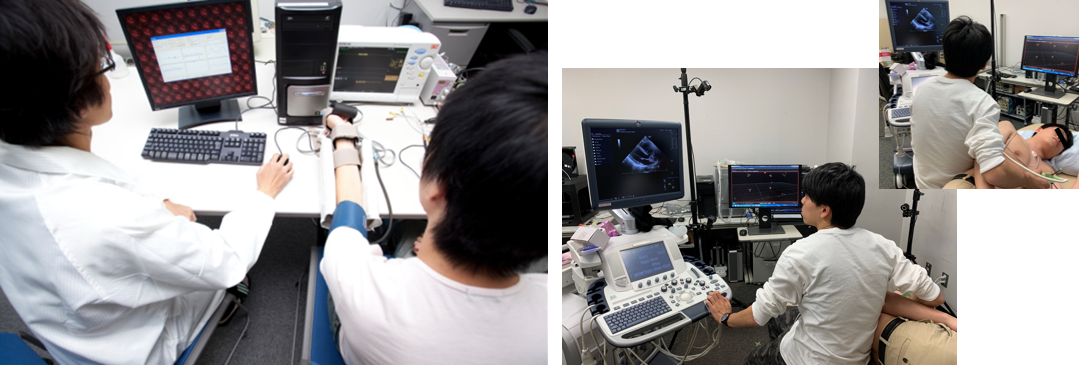
Left: Real-time blood pressure measurement, Right: Echocardiographic measurement using motion capture
Enhanced brain-computer interface by multimodal augmented reality techniques
A brain-computer interface is a human support system that decodes the user’s intentions directly from brain signals. In order to increase the reliability of the system with a user-friendly interface, we present stimuli via multiple sensory systems based on augmented reality techniques, and read the user’s intentions from the reaction in his/her brain signals.
1) Naito G., Yoshida L., Numata T., Ogawa Y., Kotani K., Jimbo Y., Simultaneous Classification of Multiple Motor Imagery and P300 for Increase in Output Information of Brain-Computer Interface, Electronics and Communications in Japan, Vol. 98, pp. 47-54, 2015
Biofeedback systems for human support
Biofeedback systems are a beneficial support to humans in many aspects of life, such as prevention of stress at work, health care, rehabilitation, and relaxation.
We develop biofeedback systems that are governed by real-time signal processing, and apply them to various fields, including workers’ health care, home relaxation support, and a tool for interactive art in which computer graphics reflect the viewers’ vital signs.
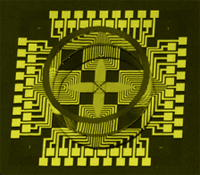


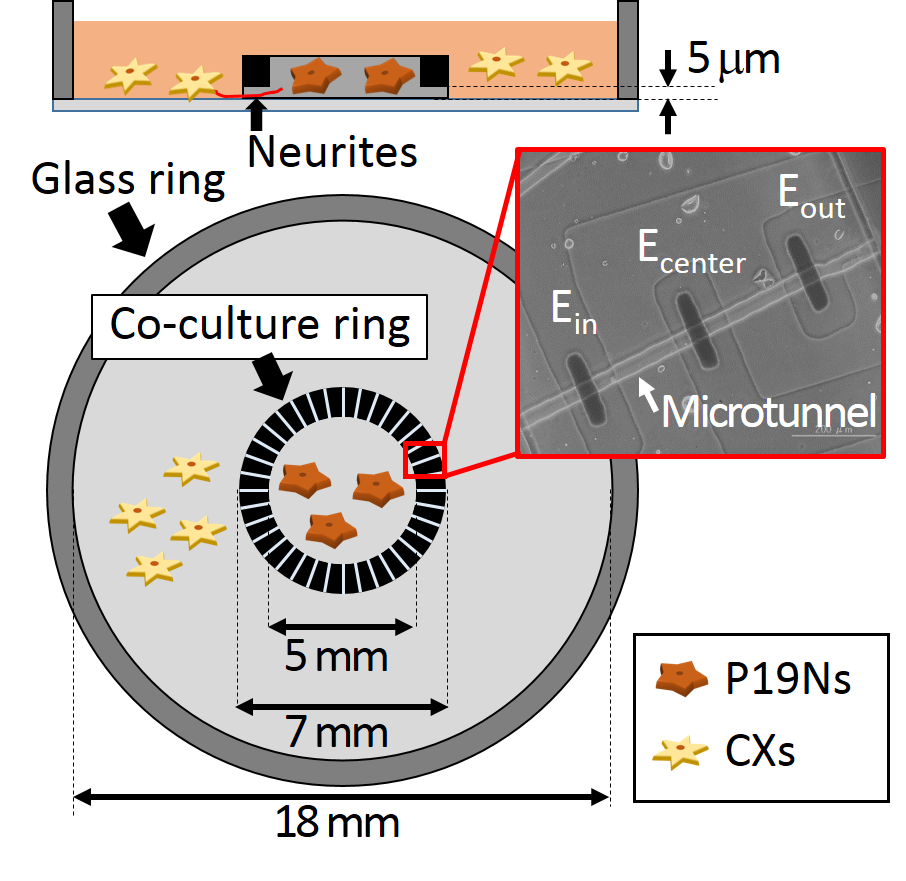

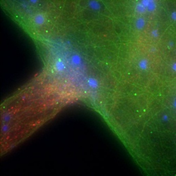

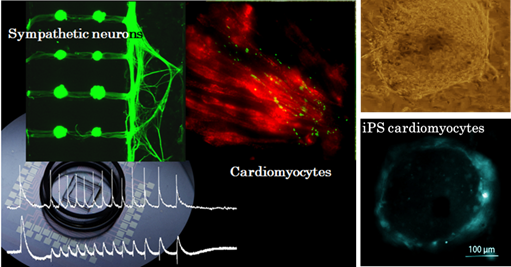
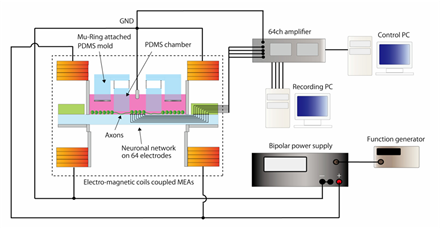
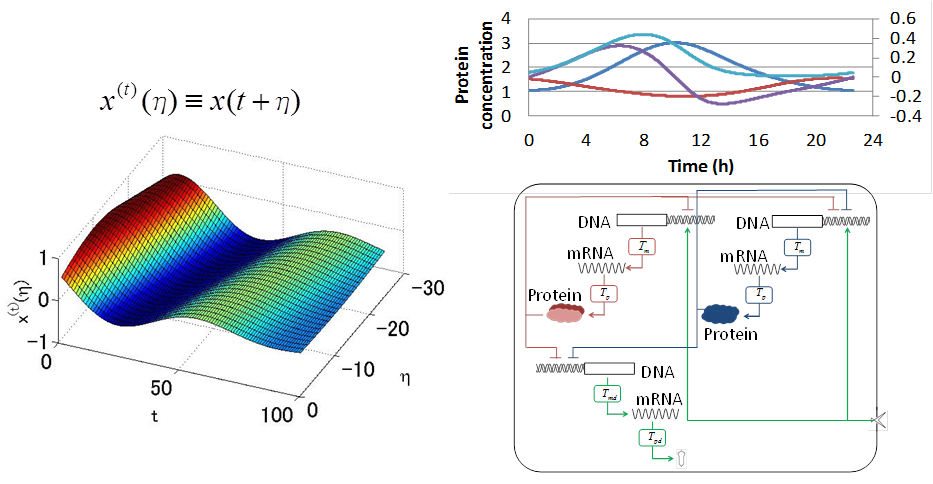
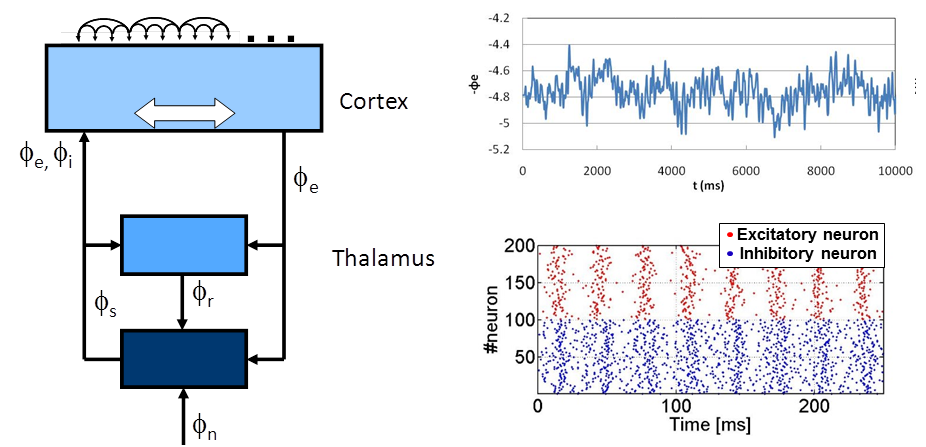
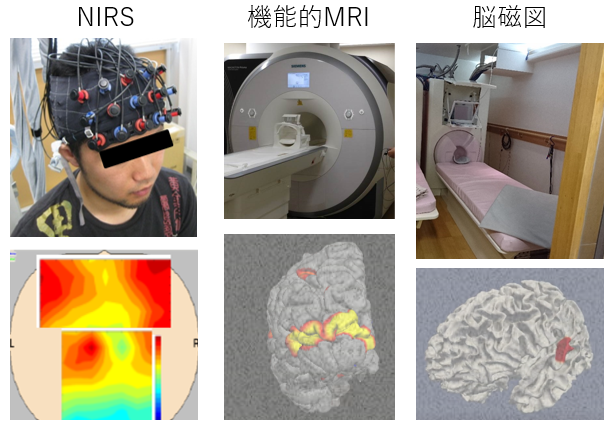
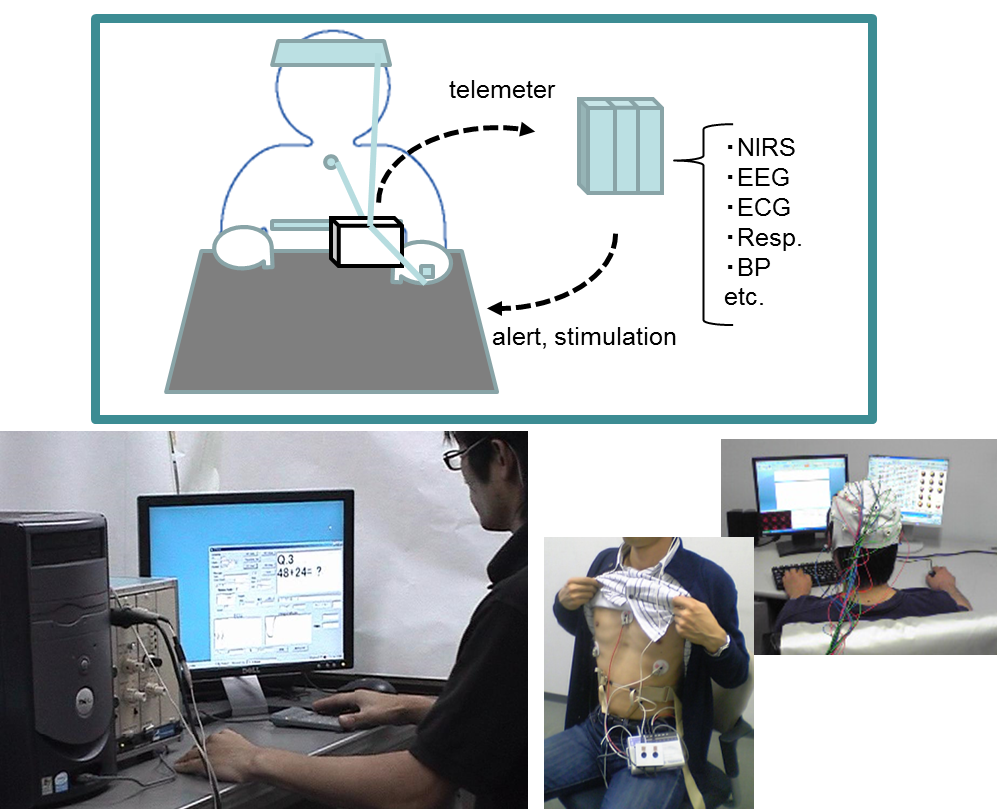
コメントを残す
コメントを投稿するにはログインしてください。